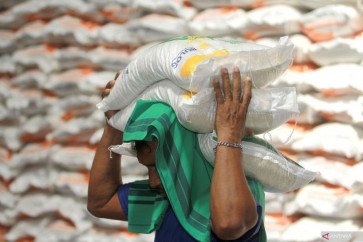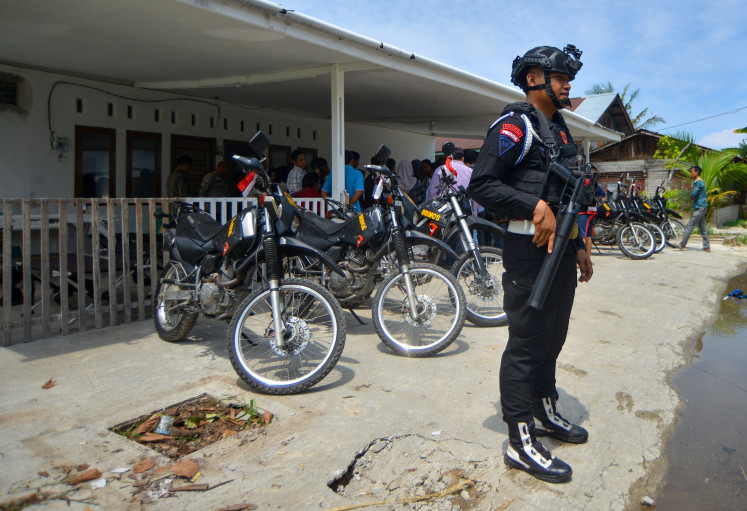Popular Reads
Top Results
Can't find what you're looking for?
View all search resultsPopular Reads
Top Results
Can't find what you're looking for?
View all search resultsManaging inflation: Food diversification
Earlier this year, a series of natural disasters hit several provinces in Indonesia
Change text size
Gift Premium Articles
to Anyone
E
arlier this year, a series of natural disasters hit several provinces in Indonesia.
There were flash floods in four subdistricts of Manado, Tomohon, Minahasa and North Minahasa in northern Sulawesi alone, causing severe damage to infrastructure.
The damage disrupted the supply and distribution of staple goods and raised inflation pressure. Interestingly, the monthly announcement by the Central Statistics Agency (BPS) put inflation in Manado at only 1.06 percent in January (month to month). In February, Manado even experienced deflation of 0.23 percent (month to month), bringing inflation in that area to 0.83 in the first two months (year to date). Manado's inflation rate was below the national inflation rate of 1.33 percent in the same period (year to date).
Compared with other regions that also experienced heavy floods such as Banten in the western part of Java, inflation in Manado was very special. Inflation in Banten reached 2.04 percent in a two-month period (year to date).
Certainly, sufficient food supplies and efficient distribution played a part in low inflation in Manado despite the floods, but there were other factors that kept inflation fairly low.
Food preferences in Manado vary so it does not depend on one type of staple food. This is different from Banten, which consumes mostly rice as the main staple food.
One of Manado's staple foods is Tinutuan porridge made of pumpkin, rice, cassava, spinach, kale, corn and basil. Although the porridge contains rice, the proportion is not as much as ordinary rice porridge.
The weight of food in the inflation index in Manado, according to the cost of living survey by the BPS, is relatively large at 20.61 percent.
Food diversification is important not only to enhance and sustain food security but also has a significant role in maintaining price stability. The diversification of food gives more options to people so that when there is disruption or scarcity in certain types of staple foods, people can turn to other foods.
The existence of these choices may reduce the demand on particular types of food commodities, thereby decreasing the risk of unreasonable price hikes.
Indonesia, with a population of over 240 million, is a huge rice consumer. According to the Agriculture Ministry, Indonesia's rice consumption was estimated at 35 million tons last year, while rice (milled) production, according to the ministry totaled 39 million tons.
Even people in Papua and Nusa Tenggara who used to consume sago and corn as their main staple foods have turned to rice due to the food policy launched during the three decades of the Soeharto administration.
The rice policy has changed the food consumption pattern whereby most people have shifted from a wide variety of foods such as cassava, maize and sago in the eastern region of the country to rice as the main staple food.
Now the government has again encouraged local residents on various islands to return to their old staple foods, because the heavy dependence on rice makes the country highly vulnerable to wide fluctuations in the supply and price of rice.
A more diversified variety of staple foods consumed by the people in the various islands will prevent too heavy demand on rice and protect the country from wide rice volatility because rice imports sometimes have to be made to meet the domestic deficit, while international rice suppliers are few, such as Thailand, Vietnam and India.
But food diversification programs should also be supported with adequate farm policies and input to encourage the cultivation of various food crops. The regions in Indonesia have a wealth of popular local food. Almost every province has its own cuisine based on raw materials available locally in abundant supply.
Broadening food diversification is not limited to controlling inflation but also to securing food security, which is vital for social, political and economic stability.
_________________
The writer is a member of the Banten Regional Inflation Control Team (TPID). The views expressed are his own.










